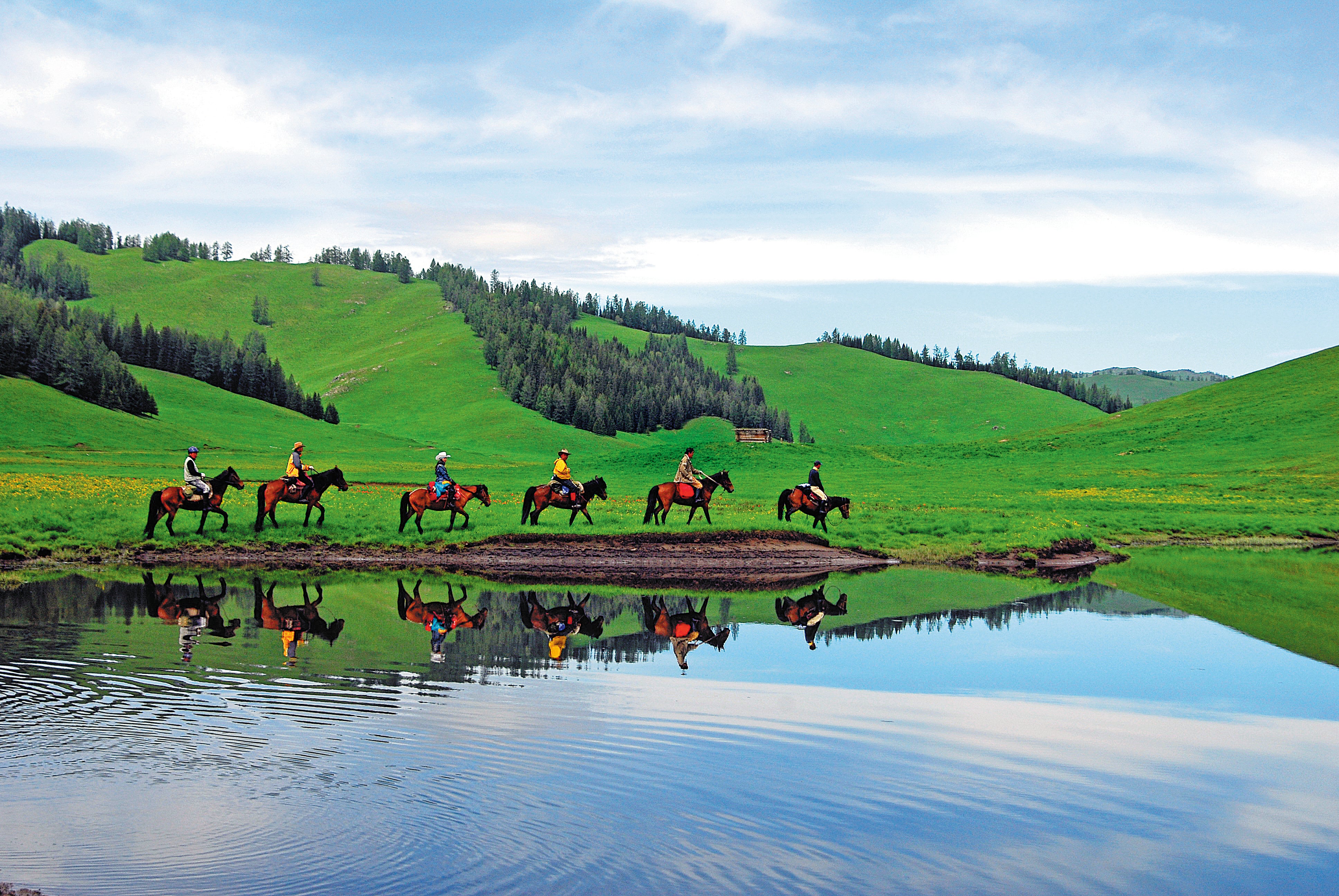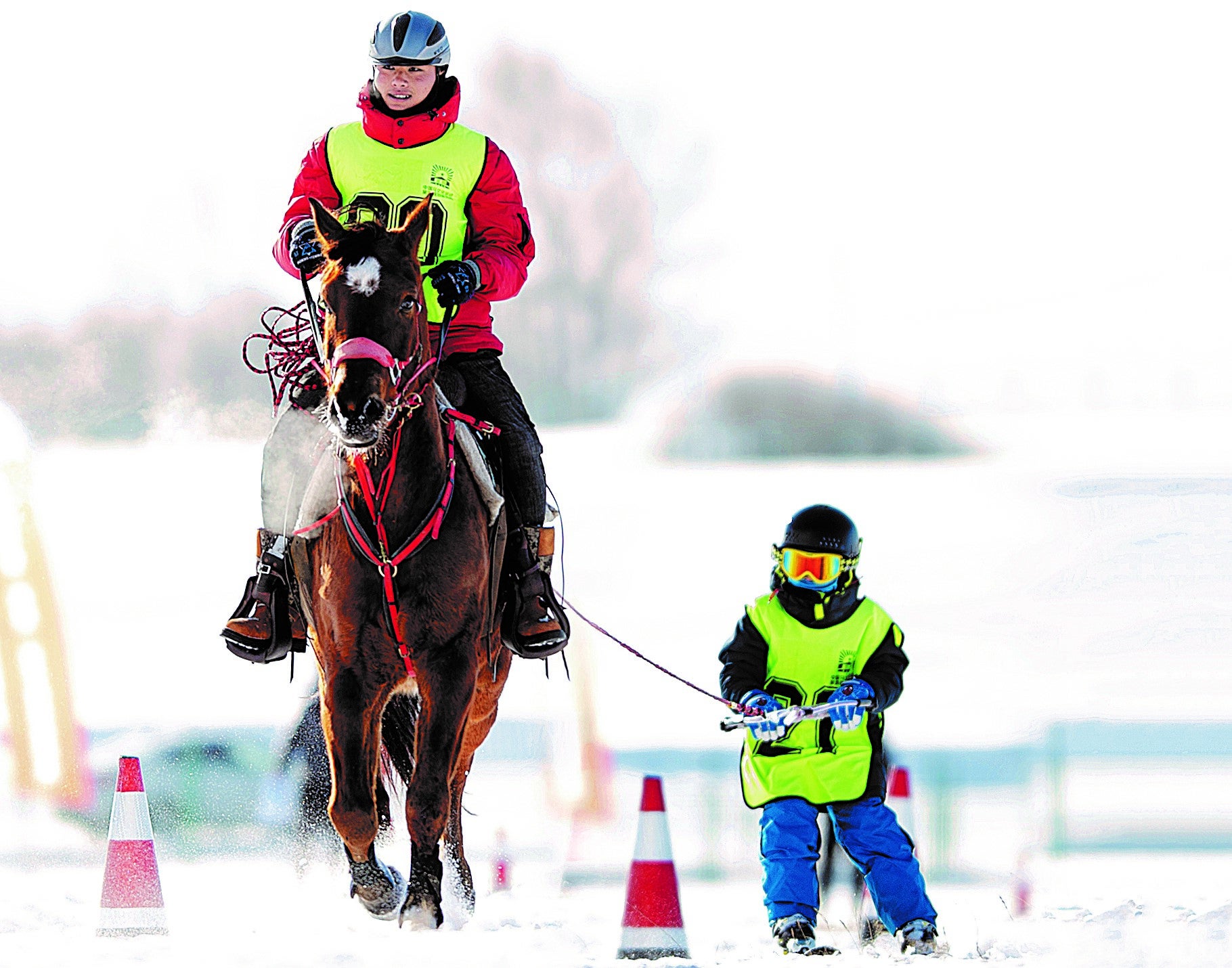Equestrian sector in China saddles up for growth
THE ARTICLES ON THESE PAGES ARE PRODUCED BY CHINA DAILY, WHICH TAKES SOLE RESPONSIBILITY FOR THE CONTENTS

The Chinese equestrian industry is gearing up for milestone development, with rising affluence set to tap rich cultural heritage, riding on the back of international sporting events and domestic tourism, according to the latest industry trends and analysis.
More than 1.19 million people were registered at 2,000 equestrian clubs nationwide by 2019, an increase of more than 20 per cent in just two years, according to figures from an inaugural report on China’s horse culture industry.
Of about 3.67 million horses across two-thirds of the country, more than 100,000 horses are also used for tourism and leisure activities, with 30 million rider experiences every year that help make up more than 60 billion yuan (£7.2 billion) in the value of horse cultural tourism, the report said.
The 295-page book, presented by the Art Development Centre of the Ministry of Culture and Tourism, tracked and analysed Chinese equestrian development, drawing on millennia of human-horse interaction. Topics covered include industry management and investment, breeding, tourism trends, education andprofessional training, as well as its historical, ethnic and social aspects.
Industry experts and stakeholders affirmed the development trends highlighted by the book and looked to the unprecedented opportunities in the post-pandemic era and beyond. Chen Che, secretary-general of the Beijing Turf and Equestrian Association, said the industry is poised to move forward by staging international events, strengthening industry standards and making the most of tourism.
The latest industry figures point to the potential of an emerging equestrian clientele. Riders aged under six accounting for 48 per cent of Chinese club members and those aged seven to 13 accounting for 40 per cent of membership in 2019. In 2017, 59 per cent of adult equestrian consumers were female, the report said.

Liu Yue of Beijing is one of the growing number of well-heeled riding enthusiasts who regularly take their children to equestrian clubs in Shunyi district of the capital. With her two daughters, Liu, 49, makes the rounds in the paddock to perfect their trots and canters on their beloved mounts.
“I’ve ridden in different parts of the world, but riding at home has its advantages. We get to practise in the city clubs and explore the beautiful grasslands, mountains and other pristine wilderness in the country’s north in all seasons”, she said.
“Chinese riding trips also allow us to get up close with local ethnic communities with traditional equestrian lifestyles and customs. That magnifies the inimitable experience on horseback which any rider home and abroad will surely find unforgettable.”
Rising Chinese equestrian interest and investment have also drawn foreign participation and presence in the industry. In 2017 the total number of horses that Chinese riding clubs bought surpassed 20,400, with imported horses accounting for more than 63 per cent of those, the report said. Foreign equestrian expertise has also been growing steadily, with more than 300 specialists, including riding-club instructors and horse handlers, registered every year, it said.
Cai Meng, vice-chairman of the Beijing Turf and Equestrian Association and founder of a horse culture museum, said riding competitions and events such as endurance races can be adapted to more local and ethnic practices that take into account indigenous horse breeds and geography.
“From riders to audiences, we must bring the sport closer to local communities so they enjoy and benefit more from it,” said Cai, who is also a veteran sports presenter for the state broadcaster CCTV.
In Xinjiang Uygur autonomous region, Northwest China, an area boasting rich equestrian resources, efforts are gearing up in a comprehensive developmental approach, covering horse breeding, hosting of top competitions and upgrading of local sustainable tourism capabilities.
“Our community highly values our horse industry and heritage and we’re looking to considerable growth in the coming years,” said Muratbek Tuliugey, who heads the horse industry office in the Altay area of the Ili Kazak autonomous prefecture in northern Xinjiang.
Previously published on Chinadaily.com.cn
